#fulani tribe
Text
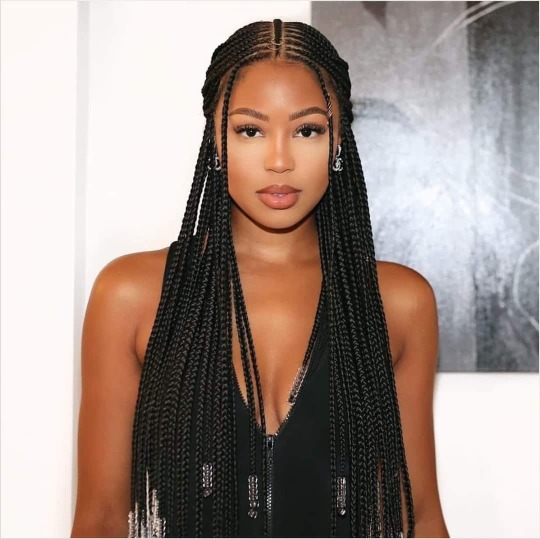

When black Americans say “we don’t even look like Africans”.
Well let me introduce you to our cousins.
These women are from the Fulani tribe. They live mainly in West Africa and northern parts of Central Africa, South Sudan, Darfur, and regions near the Red Sea coast in Sudan.
#Fulani tribe#Africa#my cousins#beautiful black women#black girl magic#blackgirlmagic#melanin#west Africa
382 notes
·
View notes
Video
youtube
WHO ARE THE FULANI PEOPLE OF AFRICA?
0 notes
Text
Allah first fulani by tribe 💝
2 notes
·
View notes
Text






Repost from @amplifyafrica
•
📚Let’s take a journey through the evolution of braids, exploring how this timeless art form has grown and transformed over millennia.
🇳🇦3500 BC: The Himba People of Namibia- For the Himba, braids were, and still are, a vital part of their culture. Each braid served as a social emblem, communicating everything from age and status to tribe and wealth. The tradition has been passed down through generations, remaining an integral part of the Himba identity.
🇳🇬x🇲🇱x🇬🇳x🇸🇳x🇳🇪500 AD: The Fulani People of West Africa-The Fulani people, spread across West Africa, are known for their intricate and distinct braid patterns. Traditionally, Fulani women would braid their hair with a central part, creating symmetrical patterns often embellished with beads, shells, and silver jewelry.
🌍 15th Century: The Transatlantic Slave Trade - As African people were forcibly taken to the Americas during the transatlantic slave trade, they carried their cultural practices, including braiding, with them. Some braids were even used as a means of escape—patterns like cornrows were mapped out to resemble paths to freedom.
✊🏽20th Century: The Black Power Movement-Braids made a powerful resurgence in the 1960s and 1970s during the Black Power Movement. Icons like Nina Simone, Angela Davis, and Cicely Tyson wore braids as a statement of pride in their African heritage. The style became a symbol of resistance against European beauty standards, reclaiming and celebrating black identity and culture.
📌21st Century: A Global Phenomenon
Today, braids have transcended their cultural origins, becoming a global phenomenon. From runways to red carpets, braids are celebrated worldwide for their beauty, versatility, and cultural significance. However, it’s essential to acknowledge and respect their deep-rooted history. Braids are not just a fashion statement—they are a connection to a lineage that spans continents and centuries.
#Braids #AfricanCulture #HairHistory #BlackExcellence #CulturalHeritage #BeautyWithMeaning #NaturalHairCommunity
44 notes
·
View notes
Text
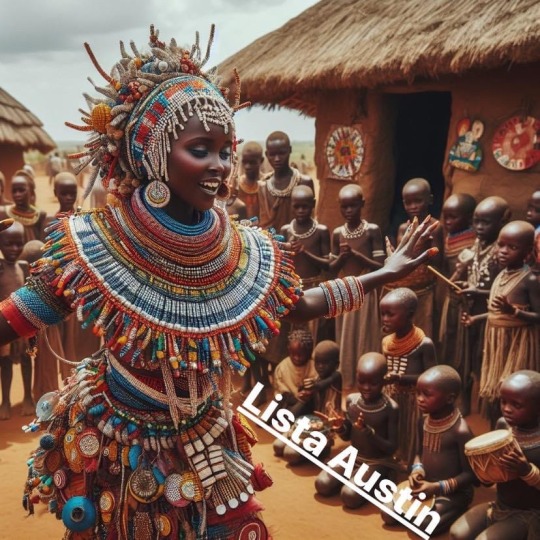
TOP 10 AFRICAN TRIBES/ETHNIC GROUPS THAT ARE GLOBALLY KNOWN.
(In no particular order)
1) Zulu ?? South Africa – The Zulu tribe is popular outside Africa. They’ve been featured in music, documentaries and movies. Shaka the Zulu was a warrior king whose popularity is well spread. Famous Zulus, Lucky Dube, Nasty C, black Coffee etc.
2) Yoruba ?? Nigeria – The Yorubas are globally known for their history, culture, art and literature. Fela, Wole Soyinka, Wizkid, Davido, Tiwa Savage, David Oyelowo, John Boyega, Anthony Joshua etc are a few Yorubas who have taken their culture to the world. The Yoruba culture has been featured in many Hollywood movies.
3) Masai ?? Kenya – The Masai are perhaps one of the most documented tribes in Africa, with alot of documentaries shown about them and books written about their culture.
They are known for their traditional clothing and hunting skills
4) Hausa ?? Nigeria – The hausas are very popular. Often known as the Igbos of the North, The richest black man in the world Aliko Dangote is Hausa along with his brother from the same state Kano Abdulsamad Rabiu (BUA). Their culture has also been well written about and have featured in a few Hollywood movies including the Amazon prime series were a woman was seen eating Tuwo shinkafa.
5) Igbo ?? Nigeria – The Igbos are undeniably known world wide. Chinua Achebe wrote about the Igbo culture alot. They are known for their history, culture and literature.
The popularized the kolanut and palm wine through books, movies and music
Chinwetalu Ejiofor, Zain Asher, Ckay, Flavour, Chimamanda, phyno, P-square are Igbos who have taken their culture to the world. Igbo are known in Nollywood movies.
6) Swahili ?? Tanzania – This tribe have phenomenal spread their language in East Africa and a few central African nations.
In the 70s, their language was part of the African-American black pride movement been pushed forward.
7) Edo/Bini ?? Nigeria – The Binis are perhaps the culture in Africa with the most famous artworks outside Egypt.
Binis are known for their history, culture and art/architecture.
The famous Benin bronze, ivory and brass artworks are known globally. The country Benin republic gets their name from them. Benin art and culture have been featured in Hollywood movies including black panther. Many Nigerian cultures have roots in Benin. The bronze mask of Queen Idia is perhaps the most famous mask in Africa and one of the most famous in the world. Popular Edos are Kamaru Usman, Rema, Odion Jude Ighalo, Victor Osimhen, Dave, Sam Loco Efe etc.
Asante Ghana – This tribe are known for their history and culture. Popular American hip hop artist was named after this tribe Asante. Their Kente is perhaps the most popular African attire outside of Africa and were known to be masters of the gold craft.
9) The Fulani – This nomadic tribes are known for their history and culture. They are predominantly in West Africa and are found in 18 African countries. Most In Nigeria ??
Popular Fulanis or people with Fulani ancestry are Muhammadu and Aisha Buhari, Tafawa Balewa,
10) Berbers/Amazigh – They are predominantly found in North Africa. They are predominantly found in Morocco ?? and Algeria ?? They known for their use of silver silver. Their culture and history well documented and have a unique language and writing system that traces back to ancient Egypt. Books are currently being written about them including a book titled salt by Haitian-American Pascaline Brodeur.
Disclaimer: Every African tribe and culture is beautiful, unique and important. No one culture is more important than the other. This only highlights tribes known outside the continent overall, this doesn’t mean there aren’t other cultures that aren’t known.
PLEASE YOU CAN ADD AND TELL US ABOUT YOUR TRIBE.
46 notes
·
View notes
Text
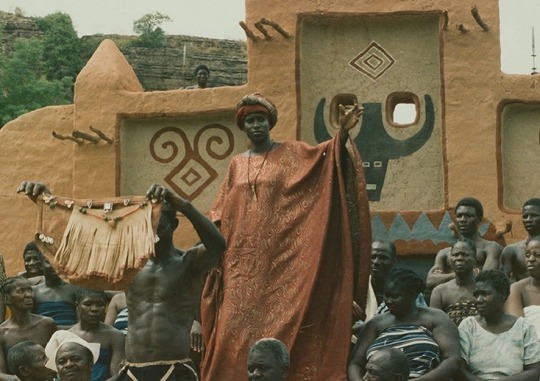
Sarraounia Mangou, the Nigerien African queen and sorceress
In the late 1800s, the French Voulet- Chanoine Mission or Central African-Chad Mission, led by the captains Paul Voulet and Julien Chanoine, were dispatched to Africa by the French government to conquer the territories between the Niger River and Lake Chad and unify all French territories in West Africa.
History says that after leaving French Sudan in January 1899, they became very callous and subjected the native people to all kinds of inhumane treatment.
They were just unstoppable until they met Sarraounia Mangou.
Sarraounia (a title indicating a female chief or a lineage of female rulers) was the Queen of the Azna, a subgroup of the Hausa, who ruled in the Niger Republic, during the late 19th century.
She was born with yellow eyes, like those of a panther and so the panther became the symbol of the Azna.
She became queen at the age of 20, after her father’s death.
Said to possess sorcerous powers, Sarraounia had, before the French invasion, fought wars on behalf of her people.
She first drove off the Tuareg, who often attempted to raid her village, then the Fulani, who wanted to convert the Azna to Islam.
Since she had often won peace with both tribes, she sought their help to fight a common enemy the French but they refused.
She subsequently mobilized her people and resources to confront the French forces of the Voulet–Chanoine Mission, which launched a fierce attack on her fortress capital of Lougou.
Known as the Battle of Lougou in 1899, the Voulet-Chanoine Mission met the strongest force and lost several men to the fighting.
What Sarraounia and her people also did was to raid the French on a nightly basis, appearing from what historians called the almost impenetrable bush where the Azna defended themselves when facing a superior enemy.
They disappeared quickly into the bush after the raid.
As many began talking about the magical prowess of the Queen, many of the army on the French side deserted the camp. Most of them were Africans who were forced into service.
The attacks eventually came to an end and within three months, the expedition commanders Voulet and Chanoine were assassinated by their own soldiers over their refusal to obey orders from France and other atrocities.
But many still attributed their deaths to the magical prowess of Sarraounia.
•••
Sarraounia Mangou, la reina y hechicera africana de Niger
A finales del siglo XIX, la Misión Francesa Voulet-Chanoine o Misión Centroafricana-Chad, dirigida por los capitanes Paul Voulet y Julien Chanoine, fue enviada a África por el gobierno francés para conquistar los territorios entre el río Níger y el lago Chad y así unificar todos los territorios franceses que estaban ubicados en África Occidental.
La historia dice que después de abandonar el Sudán francés en enero de 1899, se volvieron muy insensibles y sometieron a los nativos a todo tipo de tratos inhumanos.
Eran imparables hasta que conocieron a Sarraounia Mangou.
Sarraounia (un título que significa jefa o un linaje de mujeres gobernantes) fue la reina de Azna, un subgrupo de los hausa, que gobernó en la República de Níger a finales del siglo XIX.
Nació con ojos amarillos, como los de una pantera y así la pantera se convirtió en el símbolo de los Azna.
Se convirtió en reina a la edad de 20 años, tras la muerte de su padre.
Se decía que Sarraounia poseía poderes mágicos y, antes de la invasión francesa, había librado guerras en nombre de su pueblo.
Primero expulsó a los tuareg, quienes a menudo intentaban atacar su aldea, y luego a los fulani, quienes querían convertir a los Azna al Islam.
Debido a que a menudo había logrado la paz con ambas tribus, buscó su ayuda para luchar contra un enemigo común, los franceses, pero ellos se negaron.
Luego de esto, ella movilizó a su gente y recursos para enfrentarse a las fuerzas francesas de la Misión Voulet-Chanoine, que lanzó un feroz ataque contra su fortaleza principal, Lougou.
Conocida como la Batalla de Lougou en 1899, la Misión Voulet-Chanoine se enfrentó a la fuerza más poderosa y perdió varios hombres en los combates.
Lo que también hicieron Sarraounia y su pueblo fue atacar a los franceses todas las noches, se aparecían de un arbusto casi impenetrable, como le llamaron los historiadores. Los Azna se metían en estos para defenderse cuando se enfrentaban a un enemigo superior y desaparecían rápidamente entre los arbustos después de atacar.
Cuando muchos empezaron a hablar de las habilidades mágicas de la Reina, muchos miembros del ejército del lado francés abandonaron el campamento. La mayoría de ellos eran africanos que fueron obligados a servir.
Los ataques finalmente llegaron a su fin y luego de tres meses, los comandantes de la expedición Voulet y Chanoine fueron asesinados por sus propios soldados por negarse a obedecer órdenes de Francia y otras atrocidades.
Pero muchos todavía atribuían sus muertes a las habilidades mágicas de Sarraounia.
#africanhistory365#african queen#african warrior#africanhistory#africanheritage#knowledgeisfree#knowyourhistory#knowledgeispower#knowlegde#black history is everybody's history#historyfacts#black history is world history#niger#nigerien#queen#panthers#history#historia#historia africana#conocimiento#Níger#african history#african#the more you know#black history matters#black history month#blackhistoryeveryday#blackhistoryyear#blackhistory#blackhistory365
16 notes
·
View notes
Text
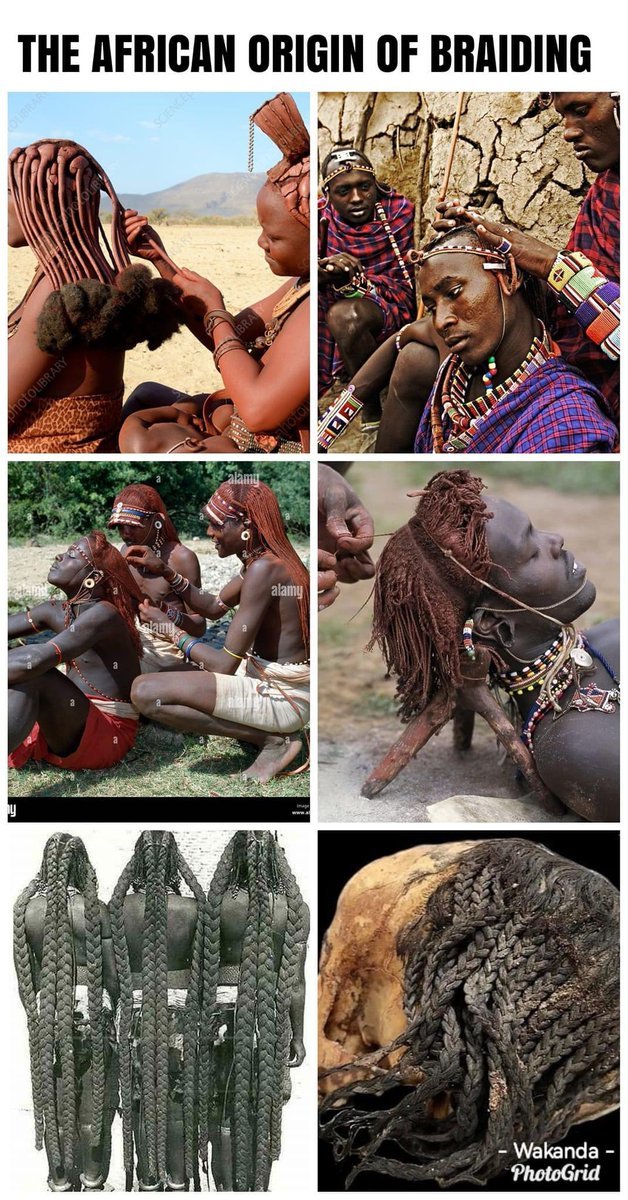
Typical African on Twitter
@Joe__Bassey
THE AFRICAN ORIGIN OF BRAIDING The origin of braids can be traced back 5000 years in African culture to 3500 BC—they were very popular among women. Braiding started in Africa with the Himba people of Namibia. The country’s Mbalantu ethnicity uses eembuvi braids as an initiation into womanhood – our first examples of single braids or “box braids". In Angola, among certain tribes, hair grooming was an activity trusted only by other family members — something that women were taught at a young age and encouraged to participate in throughout their lives to promote womanhood. The origins of the ever-popular Bantu Knots have been traced to the Bantu people who exist across central and Southern Africa. “South Africa’s “Zulu Knots” are said to be the original manifestation of the style, and South Africa is also credited for the invention of “Box braids”, with evidence of the style being traced back to 3500 BCE. Braiding’s roots in East Africa have been traced back to 3500 BC, with cornrows (called Kolese braids in Yoruba) maintaining the top spot in popularity for just as long. Historically, Somali women have been recorded donning long, small braids when approaching puberty. Ethiopia has maintained an admirably close relationship with its traditional forms of braiding. In the Southwestern Omo Valley, the Hamar people have perfected their hairstyles as a means to dictate male worth and female marital status. The importance of braids in communicating identity is a rich part of Uganda’s history, too. In Kenya, the Maasi and Kikuyu tribes have donned their famed matted braids, intricate beading, and gold detailings ever since. West Africa boasts an abundance of hair braiding styles, many of which have influenced global African culture and trends for decades. The Fula people, whose 30 million strong population exists across West Africa, gifted the world with Fulani braids. In Ghana, the iconic Banana or Ghana braids have gained favor for their easy application, upkeep, and excellence in providing protection to natural Black hair. The first examples of this way of braiding are traced back to hieroglyphics and sculptures found around 500 BC. Similarly, Nigeria’s rich history of braiding can be traced back to a clay sculpture dated to 500 BCE depicting a cornrowed member of the Nok tribe. Mali's Dogon people has various spiritual idols depicting cornrowed spiritual leaders, and the retained tradition of The Dama dance have allowed us the privilege of understanding the bewildering society that contributed to our understanding of our universe. In Sierra Leone, Mende people's hair is closely tied to femininity and is juxtaposed with the way forests grow out of the Earth – the vegetation covering Mother Earth grows skyward the way Afro-textured hair grows out of the head. Senegal’s Senegalese Twists or “Rao” as they’re known locally came in vogue as an alternative means of creating individual, long braids – if locs or “box braids” aren’t your style. Gambian warriors were known to march off to war with tightly coiled braids, too. The Mangbetu people of the Democratic Republic of Congo, known for their practice of wrapping their skulls into a cone shape from infancy, locally referred to as “Lipombo, ” the elongated heads were then adorned with braids plaited into a crowned, basket shape called edamburu. Cameroon’s bountiful Fulani community has kept many of their hair traditions well and alive, while the region’s Bantu population participated in the popularity of the now-famed ‘Bantu knots’. In Chad, women of the Basara ethnicity are known for their thick, long, luscious hair – often plaited into waist-long individual braids. In Kemet around 1600 BCE, hair braiding amongst women of royalty, nobility, and concubines was adorned with gold, beads, and perfumed grease, while common folk kept to simpler styles necessary to get work done. #Africa
9 notes
·
View notes
Photo
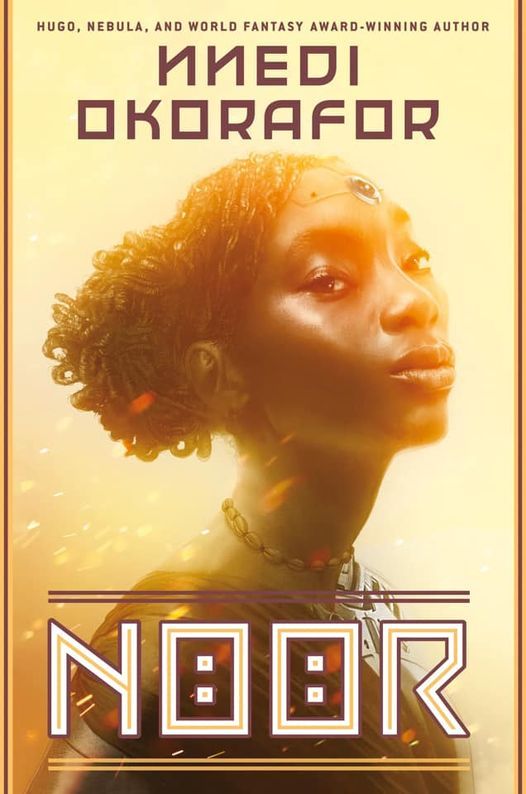
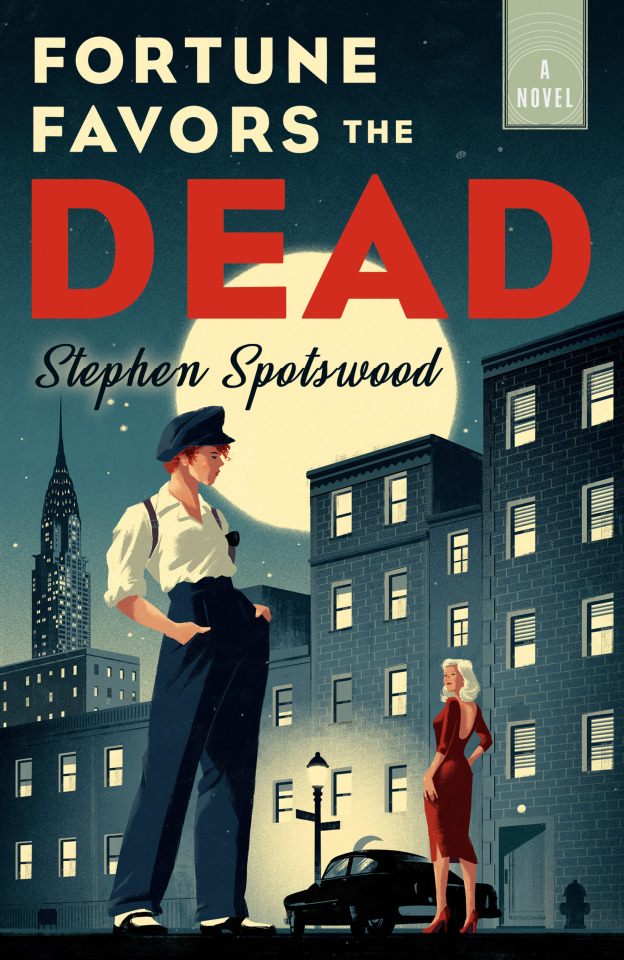


Disability Pride Month: Genre Fiction Recommendations
Noor by Nnedi Okorafor
Anwuli Okwudili prefers to be called AO. To her, these initials have always stood for Artificial Organism. AO has never really felt...natural, and that's putting it lightly. Her parents spent most of the days before she was born praying for her peaceful passing because even in-utero she was "wrong". But she lived. Then came the car accident years later that disabled her even further. Yet instead of viewing her strange body the way the world views it, as freakish, unnatural, even the work of the devil, AO embraces all that she is: A woman with a ton of major and necessary body augmentations. And then one day she goes to her local market and everything goes wrong.
Once on the run, she meets a Fulani herdsman named DNA and the race against time across the deserts of Northern Nigeria begins. In a world where all things are streamed, everyone is watching the "reckoning of the murderess and the terrorist" and the "saga of the wicked woman and mad man" unfold. This fast-paced, relentless journey of tribe, destiny, body, and the wonderland of technology revels in the fact that the future sometimes isn't so predictable. Expect the unaccepted.
Fortune Favors the Dead by Stephen Spotswood
It's 1942 and Willowjean "Will" Parker is a scrappy circus runaway whose knife-throwing skills have just saved the life of New York's best, and most unorthodox, private investigator, Lillian Pentecost. When the dapper detective summons Will a few days later, she doesn't expect to be offered a life-changing proposition: Lillian's multiple sclerosis means she can't keep up with her old case load alone, so she wants to hire Will to be her right-hand woman. In return, Will is to receive a salary, room and board, and training in Lillian's very particular art of investigation.
Three years later, Will and Lillian are on the Collins case: Abigail Collins was found bludgeoned to death with a crystal ball following a big, boozy Halloween party at her home—her body slumped in the same chair where her steel magnate husband shot himself the year before. With rumors flying that Abigail was bumped off by the vengeful spirit of her husband (who else could have gotten inside the locked room?), the family has tasked the detectives with finding answers where the police have failed.
But that's easier said than done in a case that involves messages from the dead, a seductive spiritualist, and Becca Collins—the beautiful daughter of the deceased, who Will quickly starts falling for. When Will and Becca's relationship dances beyond the professional, Will finds herself in dangerous territory, and discovers she may have become the murderer's next target.
This is the first volume of the “Pentecost and Parker” series.
Borderline by Mishell Baker
A year ago, Millie lost her legs and her filmmaking career in a failed suicide attempt. Just when she’s sure the credits have rolled on her life story, she gets a second chance with the Arcadia Project: a secret organization that polices the traffic to and from a parallel reality filled with creatures straight out of myth and fairy tales.
For her first assignment, Millie is tasked with tracking down a missing movie star who also happens to be a nobleman of the Seelie Court. To find him, she’ll have to smooth-talk Hollywood power players and uncover the surreal and sometimes terrifying truth behind the glamour of Tinseltown. But stronger forces than just her inner demons are sabotaging her progress, and if she fails to unravel the conspiracy behind the noble’s disappearance, not only will she be out on the streets, but the shattering of a centuries-old peace could spark an all-out war between worlds.
No pressure.
This is the first volume of the “Arcadia Project” series.
The Kiss Quotient by Helen Hoang
Stella Lane thinks math is the only thing that unites the universe. She comes up with algorithms to predict customer purchases—a job that has given her more money than she knows what to do with, and way less experience in the dating department than the average thirty-year-old.
It doesn't help that Stella has Asperger's and French kissing reminds her of a shark getting its teeth cleaned by pilot fish. Her conclusion: she needs lots of practice—with a professional. Which is why she hires escort Michael Phan. The Vietnamese and Swedish stunner can't afford to turn down Stella's offer, and agrees to help her check off all the boxes on her lesson plan—from foreplay to more-than-missionary position...
Before long, Stella not only learns to appreciate his kisses, but crave all of the other things he's making her feel. Their no-nonsense partnership starts making a strange kind of sense. And the pattern that emerges will convince Stella that love is the best kind of logic...
This is the first volume of the “Kiss Quotient” series.
#disability pride month#disabilities#Genre Fiction#fiction#Library Books#Book Recommendations#book recs#Reading Recs#reading recommendations#TBR pile#tbr#tbrpile#to read#Want To Read#Booklr#book tumblr#book blog#library blog
39 notes
·
View notes
Text
19 notes
·
View notes
Photo

Yenndouma, 1969. Photo by Pamela Johnson Meyer. "Propped by rubble, logs, and faith, a family compound at Venndouma clings to a rock face of the Bandiagara escarpment. Smooth mud walls with rounded corners mark the living quarters, upper center. Straw-hatted granaries perch haphazardly. In some, the head of the family stores his reserves of millet, sorghum, rice, and beans, others hold a day-to-day supply for the household, given out by the wife. A hogon, or village priest, may own larger granaries, communal sources of food in lean times." The Dogon took up their way of life centuries ago, driven by the Fulani and other warrior tribes to these inhospitable but defensible heights that had earlier sheltered a little-known people called the Tellem. Here, secluded from the outside world, the Dogon nurtured their complex social order, based in almost every detail on elaborate religious precepts and beliefs They also developed the arts of sculpture and dance, permeated with symbolism that still intrigues anthropologists." From "Foxes foretell the future in Mali's Dogon country". https://www.instagram.com/p/CmPf2koNExd/?igshid=NGJjMDIxMWI=
124 notes
·
View notes
Note
Do you have any headcanons for Philip or any of the other killers/survivors?
Oh goodness, I have loads. I could go on and on really, but for this ask I'll stick with Philip. Let me know if you'd like to know about some others. ^^
I hc Philip as ethnically Igbo, which is one of the larger tribes of Nigeria and are mostly found in the southeast areas of the country. There's lots of evidence in his lore that points to this being the case, and I've made a Tumblr post about it before detailing how I came to this hc!
Adding onto my first hc, Philip's tome lore hints that he not only was there during the war, but was also a survivor of the Anti-Igbo progrom of 1966, in which a massacre was committed against the Igbo people, presumably from soldiers of the opposing Hausa-Fulani people and/or those native to Northern Nigeria who aligned with the growing hatred of the Igbo people during that time. I therefore like to hc that Philip is also a genocide survior.
His adoptive mother, Funanya, was born Igbo but married Hausa. When war broke out and she lost her husband, she tried to flee to the south with her children when she found Philip. Because it was extremely dangerous for an orphaned Igbo boy to be in the north where the war and killings took place, she taught him everything she could about the Hausa culture, including their muslim-based religion, language, and traditions. It's because of her that Philip was able to survive by pretending to be Hausa.
I'm sure I've made it obvious enough, but Philip has some severe and untreated C-PTSD. C, because his trauma spans over years of his life and cannot be considered one singular event. His symptoms tend to manifest as psychogenic tremors, prone to panic attacks, dissociation, heightened anxiety and vivid nightmares. Daytime flashbacks are rare for him, but if stressed out enough and exposed to a major trigger, they can and will happen to him as well. The smell of blood, the sound of gunfire and fire are his three biggest and most prevalent triggers.
Philip developed alcoholism as an unhealthy coping mechanism. He's an extremely emotional and depressed drunk, the kind of person who's pretty much the opposite of the fun party drinker. He's prone to very quickly losing control of his own emotions and crying instead. Drinking is the only way he knows how to knock himself out enough to avoid vivid, PTSD driven nightmares of Nigeria.
On a way less depressing note, Philip is lactose intolerant! But he'll 100% sacrifice his tummy every now and then for a good bowl of ice cream.
Philip is left-handed, but learned very early on to not use his left hand when interacting with others because it is considered rude and taboo in Nigerian culture (and generally in many other African cultures). His parents understood that his brain is just wired differently so they never forced or trained him into right-handedness, but they both kinda taught him early on to be mindful to use his right hand in public for things other than throwing or writing.
I hc Philip as a demisexual (possibly biromantic as well, but that's not something he's ever bothered to explore). He's the kind of person who definitely strikes me as ace, not ever having a sexual interest because he's such a lonely person and is just not immediately attracted to anyone at all. However, Philip is also a deeply emotional man and relies on them a lot, so it's only when he's developed a bond with someone that he'll start to develop that physical attraction. He quite literally NEEDS that emotional/romantic connection in order to be able to engage in sex, let alone enjoy it. Casual stuff is a total no for him. He tried it only one or two times as a troubled teenager and quickly found that he did NOT enjoy the experience. He just can't do it.
Philip's love language is both touch and undivided attention. He's the kind of person who is deeply devoted to his partner and, once he feels safe and secure in the relationship, will give you his whole heart. He's kind of terrible at speaking because he's such an introverted person, so he expresses his love through physical touch as well as almost always paying attention to his partner and their needs.
In terms of intimacy, Philip as an ace person isn't really all that excited about sex. He'll still definitely enjoy it with his special person, and he'll most definitely initiate it every now and then because he does find his partner physically attractive since he's deeply emotionally connected to them, but to him sex is a bonding experience and less of something to do just for fun. He's extremely romantic in bed - eye contact, kisses, little praises, holding hands, slower pace, you name it. His entire focus will be to please his partner and not himself. He doesn't need or care much about reaching climax, he'll be perfectly fulfilled with the experience knowing his partner feels good and is satisfied.
Since he'd moved to the US, Philip is a bit insecure of his accent because it really makes him stand out. Over time he's managed to tone it down significantly, but it's still there and still very noticeable, just perhaps easier to understand. When he'd first moved, he had a hyperfixation on touching up his English and sounding as well spoken as possible in hopes it would minimize his chances of being picked on as a black immigrant in the country. This was the 1970s, after all.
I'm sure this also goes without saying lol, but Philip is way more attractive than he gives himself credit for. Yes, half his face has been burned, but he'd been lucky enough to put himself out when it happened fairly quickly, so the damage didn't get too far deep into his skin. The burn scars haven't really disfigured his handsome features all that much, just changed the texture and color of his skin. Still, he often feels ugly because of how he looks.
Because Philip had nearly starved to death as a child in Nigeria a number of times, he kinda has an obsession with being as physically healthy as he can be. He runs a lot and does a decent amount of exercise to keep himself lean and in shape, because it feels good having a sense of control over his own body. He never EVER wants to feel malnourished again in his life.
Philip is a very tall man, like 6 feet and some inches and fairly broad in the shoulders. Despite his size, he's developed a natural talent for being extremely silent and light on his feet. When he wants to, Philip can move as quietly as a mouse and is pretty agile on top of that. It's a useful trait to have in the realm (in the context of OIN at least)- you'd think a big guy like him is an easy target to chase, but Philip has the impressive capacity to be deceivingly stealthy and hard to track.
Math (unsurprisingly) is his favorite subject, and Philip is also highly intelligent in this regard. He's a very quick analytical thinker and can do complex math problems in his head fairly well. It comes in handy with his job in Autohaven, to be able to make quick calculations and measurement conversions.
I definitely have more hcs but these are some of the big ones that I can articulate off the top of my head. Thanks for asking!
29 notes
·
View notes
Text
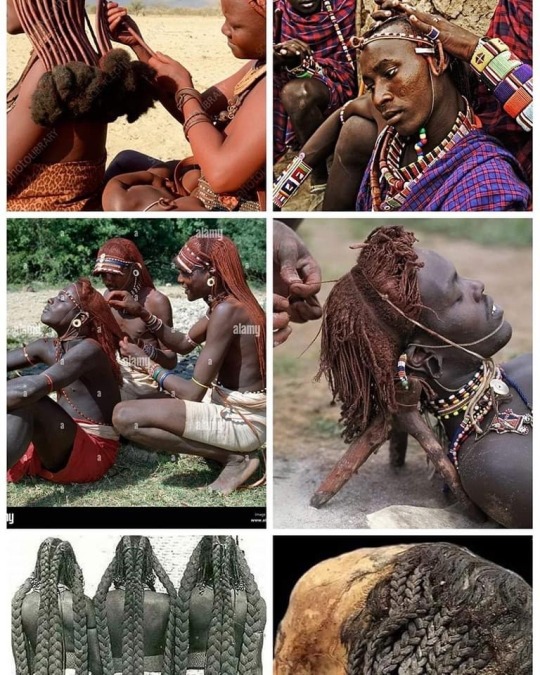
THE AFRICAN ORIGIN OF BRAIDING
The origin of braids can be traced back 5000 years in African culture to 3500 BC—they were very popular among women. Braiding started in Africa with the Himba people of Namibia. The country’s Mbalantu tribe uses eembuvi braids as an initiation into womanhood – our first examples of single braids or “box braids". In Angola, among certain tribes, hair grooming was an activity trusted only by other family members — something that women were taught at a young age and encouraged to participate in throughout their lives to promote womanhood. The origins of the ever-popular Bantu Knots have been traced to the Bantu people who exist across central and Southern Africa. “South Africa’s “Zulu Knots” are said to be the original manifestation of the style, and South Africa is also credited for the invention of “Box braids”, with evidence of the style being traced back to 3500 BCE. Braiding’s roots in East Africa have been traced back to 3500 BC, with cornrows (called Kolese braids in Yoruba) maintaining the top spot in popularity for just as long. Historically, Somali women have been recorded donning long, small braids when approaching puberty.
Ethiopia has maintained an admirably close relationship with its traditional forms of braiding. In the Southwestern Omo Valley, the Hamar tribe have perfected their hairstyles as a means to dictate male worth and female marital status. The importance of braids in communicating identity is a rich part of Uganda’s history, too. In Kenya, the Maasi and Kikuyu tribes have donned their famed matted braids, intricate beading, and gold detailings ever since. West Africa boasts an abundance of hair braiding styles, many of which have influenced global African culture and trends for decades. The Fula people, whose 30 million strong population exists across West Africa, gifted the world with Fulani braids. In Ghana, the iconic Banana or Ghana braids have gained favor for their easy application, upkeep, and excellence in providing protection to natural Black hair. The first examples of this way of braiding are traced back to hieroglyphics and sculptures found around 500 BC. Similarly, Nigeria’s rich history of braiding can be traced back to a clay sculpture dated to 500 BCE depicting a cornrowed member of the Nok tribe. Mali's Dogon tribe has various spiritual idols depicting cornrowed spiritual leaders, and the retained tradition of The Dama dance have allowed us the privilege of understanding the bewildering society that contributed to our understanding of our universe. In Sierra Leone, Mende people's hair is closely tied to femininity and is juxtaposed with the way forests grow out of the Earth – the vegetation covering Mother Earth grows skyward the way Afro-textured hair grows out of the head.
Senegal’s Senegalese Twists or “Rao” as they’re known locally came in vogue as an alternative means of creating individual, long braids – if locs or “box braids” aren’t your style. Gambian warriors were known to march off to war with tightly coiled braids, too. The Mangbetu people of the Democratic Republic of Congo, known for their practice of wrapping their skulls into a cone shape from infancy, locally referred to as “Lipombo, ” the elongated heads were then adorned with braids plaited into a crowned, basket shape called edamburu. Cameroon’s bountiful Fulani community has kept many of their hair traditions well and alive, while the region’s Bantu population participated in the popularity of the now-famed ‘Bantu knots’.
In Chad, women of the Basara Arab tribe are known for their thick, long, luscious hair – often plaited into waist-long individual braids. In Kemet around 1600 BCE, hair braiding amongst women of royalty, nobility, and concubines was adorned with gold, beads, and perfumed grease, while common folk kept to simpler styles necessary to get work done. Back in the day, braiding hair was considered a special ceremonial practice amongst Sudanese women, even holding the braiding “events” on specific days when female neighbors and friends were invited to partake.
Reference
African Tribes and the Cultural Significance of Braiding Hair". Bright Hub Education. 9 July 2011. Archived from the original on 1 September 2017. Retrieved 1 May 2018.
6 notes
·
View notes
Photo

A beautiful lady of Fulani Tribe, carrying a beautiful baby, in Djenne', Mali, West Africa. Her tattoo around lips, indicate she is married.
34 notes
·
View notes
Photo
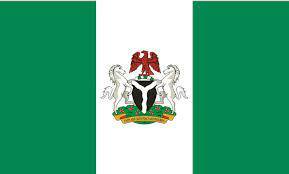

What is the ethnic tribe in Nigeria?
Hmmm, okay let me make an attempt to answer this dicey question.
First, I am going to assume Nigeria is made up of just 5 tribes for clarity of answer, and my chosen tribes will be - The Hausa-Fulani, The Igbos, The Yorubas, The Binis, and The Ijaws-Urhobos.
Going further, in Nigeria, there are 5 - 6 classes of rich people:
The Politicians (political class) & Politically Assisted Persons
The Genuine Businessmen and Industrialists
The professional working class - those working & earning fat salaries
The hustlers - internet scammers, drug peddlers, human traffickers,
The rich diasporas - Nigerians living. working & earning fat pay legally abroad
The entertainers - music stars, movie stars, sportsmen, etc
Now, before you can answer this question correctly, you must consider these class of rich Nigerians, and the number of each tribe that makes up the majority of these various class of rich Nigerians.
When you come to number 1 - Rich Politicians/Politically Assisted Persons, the Hausa-Fulani have more of this class of rich people, and the reason is obvious; they have been in political power since Nigeria got independence in 1960 more than any other tribe. After the Hausa-Fulani comes the Yoruba tribe, and then the Igbo tribe.
Genuine Businessmen & Industrialists - under this class, I think the Igbo tribe have a majority, followed by the Yorubas, and the Hausa-Fulani.
The Professional Working Class - here, the Yoruba tribe have the majority, followed by the Igbo tribe, and the Ijaw-Urhobo tribe.
The Hustlers - under this class, the Igbos have the majority, followed by the Binis and the Yorubas, and then other tribes
The Rich Diasporas - The Igbo tribe also take the majority for obvious reason; after the end of the Nigerian civil war in 1969, which was like a war between the Igbo tribe and the rest of Nigerian tribes, which ended in favour of the rest of Nigerian tribes, and pushed Igbos to the wall because after the war ended, Igbos were left with nothing to start life with, and even got shortchanged by the Hausa-Fulani/Yoruba controlled federal government in the after-war monetary, financial policies, which made Igbos to start migrating to almost anywhere possible in search of greener pastures, and this paid them off at the long run, as they are now found in almost every part of the world succeeding in various human field.
After Igbos comes the Yoruba and Bini tribes.
The Entertainers - Yorubas have the highest number of rich entertainers in Nigeria, followed by the Igbo tribe, and then other tribes.
When you put all these figures together, you will then realize that when it comes to total or highest number of rich people, Igbo is the richest Nigerian tribe, followed by the Yoruba, and then Hausa-Fulani and the Ijaw-Uhrobos.
But when you want to count the tribe with the richest person as in who has the highest quantified wealth, then it is the Hausa-Fulani and followed by the Yoruba tribe and then Igbo. But by population of rich Nigerians, Igbos are the richest. I stand to be corrected but if one is honest, the indices is there to prove this fact.
20 notes
·
View notes
Text


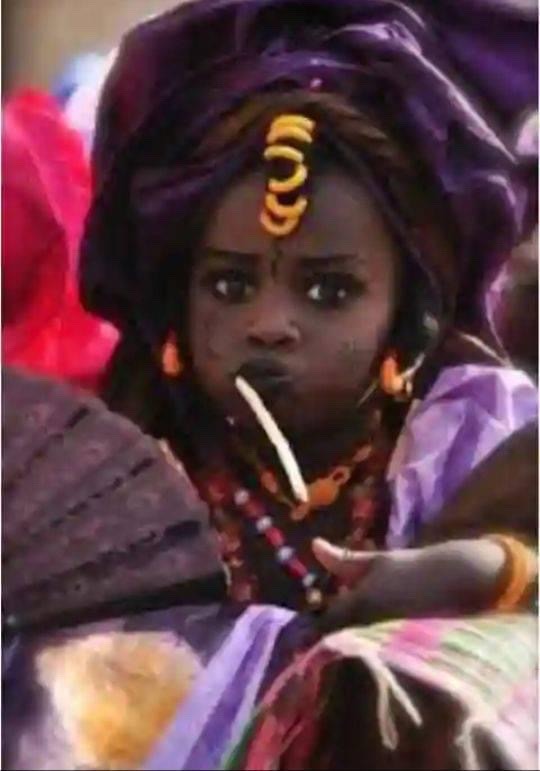
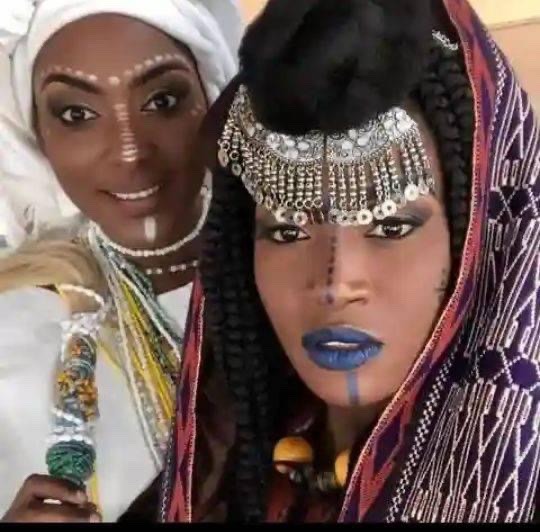
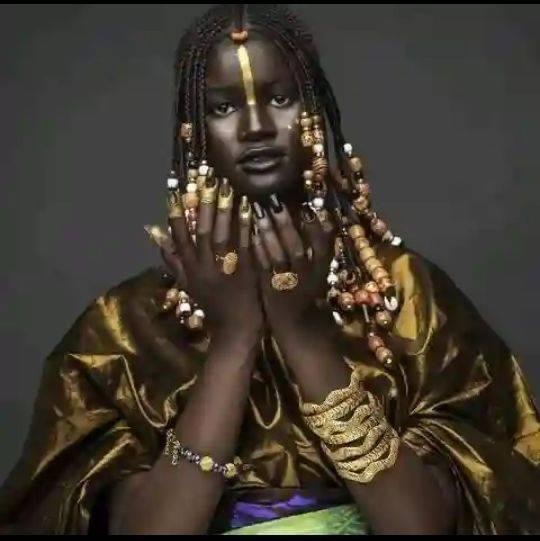
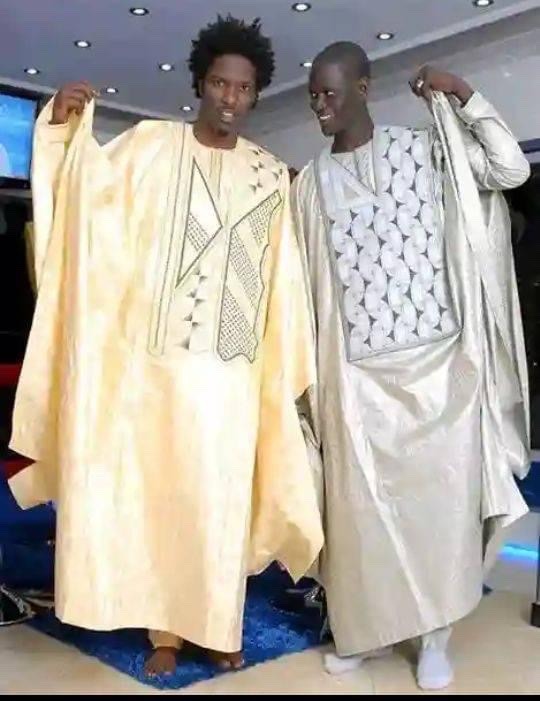


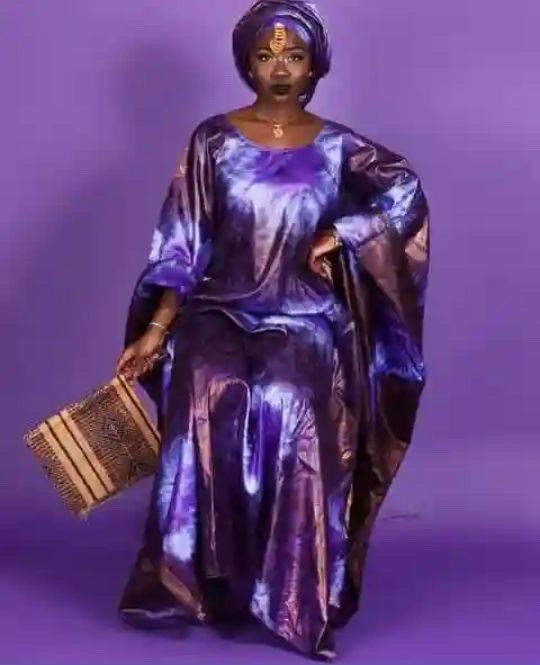
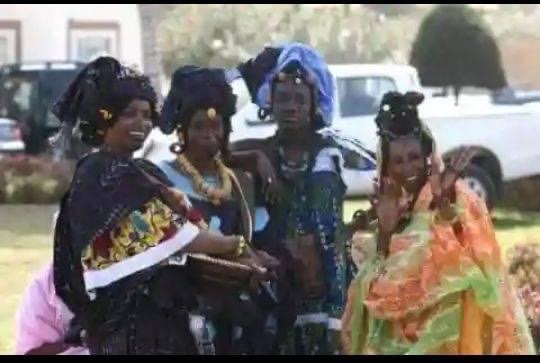
Wolof largest ethnic in Senegal 🇸🇳.
Wolof are very tall and mostly dark skin people of sahel (west Africa) found majority in Senegal, Gambia and southwestern Mauritiania, somewhere found small minorities in mali, guinea and guinea bissau. Wolof are ethnically senegambian family an ethnic family that include serer, fulani, jola or Diola, tuculur and lebu which culturally, and linguistically appear to be mutually intelligible as senegambian family that their origin date back to ancient bafour of Mauritania and far southermost sanhaja berber tribe called zenegha from where the word senegal come from. The ancient bafour paleolitic expansion appear to be mande ethnic family that their Neolithic expansion emerge as the pure ancestry to senegambian family.
The mande ethnic family ( serehule, mandinka, soninke, malinke, sosso, mandingo etc) and senegambian family (fulani, wolof, jalo, serer etc) share same origin and ancestry from basal west Africans ( the pure west African lineage) Bafour of Mauritiania
14 notes
·
View notes
Text
Takouba Sword
Takouba Sword is the sword that is used across the western Sahel and among ethnic groups such as the Tuareg, the Hausa, and the Fulani. It was a sword seen on most of the nobility of the Sahel region spanning various cultures and tribes.
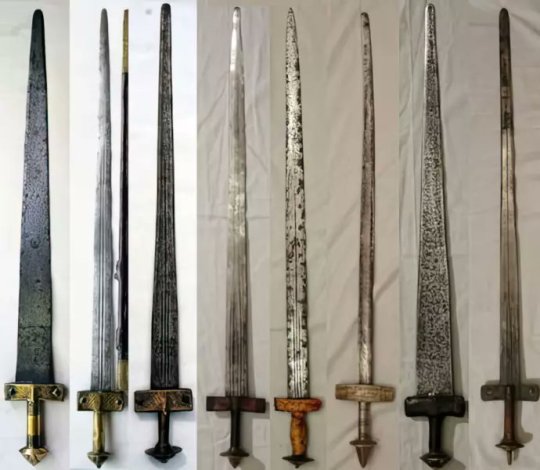
View On WordPress
2 notes
·
View notes